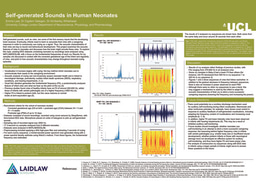LiA Report: Improving Access to Dance/Movement as a Resource for Women Living with Cancer
My Leadership in Action project this summer was an exploration of the physical and psychosocial benefits of dance in cancer care, with the goal of improving access to and awareness of dance-based interventions. I worked with Move Dance Feel, a charity providing community dance for women living with or affected by cancer through both in-person and online activity.
At the end of April I travelled to Toulouse in France to join Move Dance Feel’s spring retreat. There, I met 9 incredible women who were currently living with or had recently been affected by cancer. Spending a week in the middle of the countryside, living together, dancing together, laughing, crying, smiling together, and caring for each other left me with a huge desire to work in the field of dance in cancer care. It was the most beautiful experience to witness first-hand the power that movement can have on a person’s cancer journey, whether it relieves the stresses of treatment, allows them to express overwhelming feelings, or helps them feel better physically.
On this trip I was able to speak with each woman to understand the impact dance had had on their cancer journey. I gained an understanding of what makes an effective dance in cancer care programme, what anxieties and doubts women may have before taking part in dance programmes, and what motivated them to take part in the retreat. My role also included documenting the organisation’s retreat, through both photography and videography in order to produce promotional materials for similar events in the future.
I spent the rest of my LiA summer working with Move Dance Feel to improve awareness of dance in cancer care and the work of their organisation. A key part of my project included the creation of the Dance in Cancer Care (DICC) Network. There was no pre-existing network for professionals specialising in this area, making collaboration and research sharing very difficult. I helped collate a database of every study discussing the benefits of dance in cancer patients, as well as gathering the author's contact information, and categorising research into the benefits it discussed. We aim to make this database accessible to the public very soon to increase awareness on powerful research.
Another database we worked on included a collection of potential organisations to partner with, including cancer support centres, community organisations, and dance-focussed charities. The organisations ranged from local support groups in the East Midlands to larger-scale organisations across the UK and abroad.
I also helped plan and run a live virtual Q&A event to discuss the organisation's dance in cancer care introductory training programme, which is run both in-person and online to help students and professionals learn about the role of movement in cancer rehabilitation and how they can apply it in their career fields. For this, I produced an event briefing document for the speakers which outlined timings and logistics, provided suggestions for discussion topics, chaired the Q&A session and guided the speakers’ discussion during the livestream.
In October, I also produced a dance show at my university to fundraise for Move Dance Feel. This involved managing a 60-person cast and crew, sourcing and communicating with choreographers and dancers, problem solving on show day, and scheduling all rehearsals. The event raised over £500 for the charity in one night, an amount which will hopefully fund places for women on future retreats or help develop dance training programmes for cancer care professionals.
I am so pleased to be continuing my work with Move Dance Feel outside of the LiA period, where I will work on marketing, event planning, and partnerships, and can’t wait to explore the field of dance in cancer care even further!


Please sign in
If you are a registered user on Laidlaw Scholars Network, please sign in